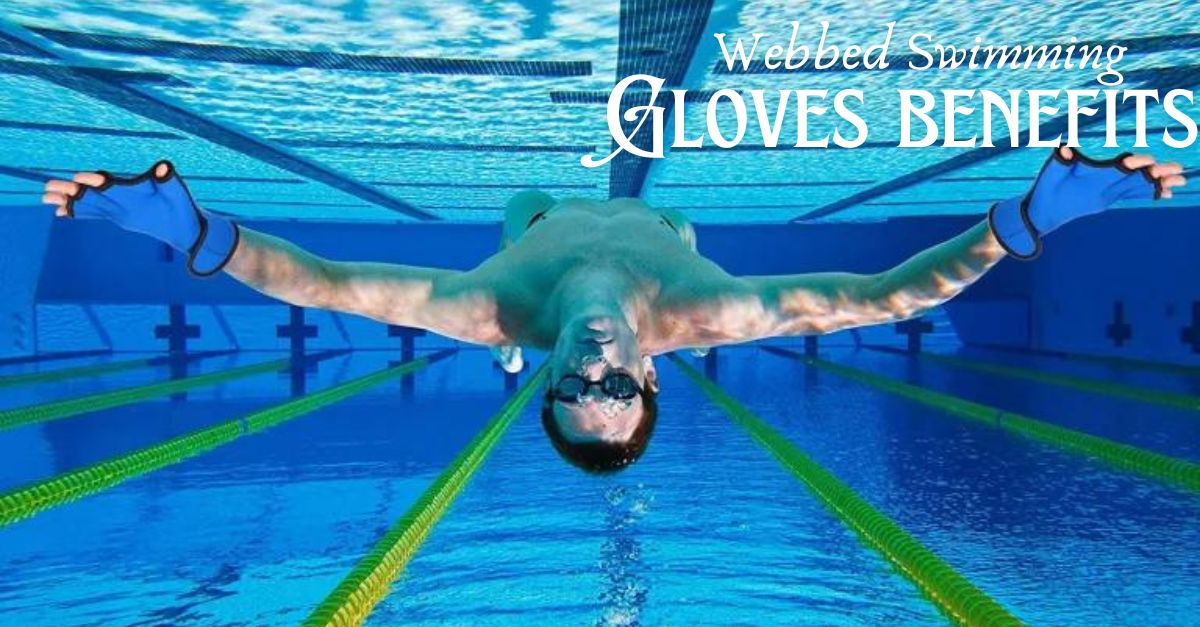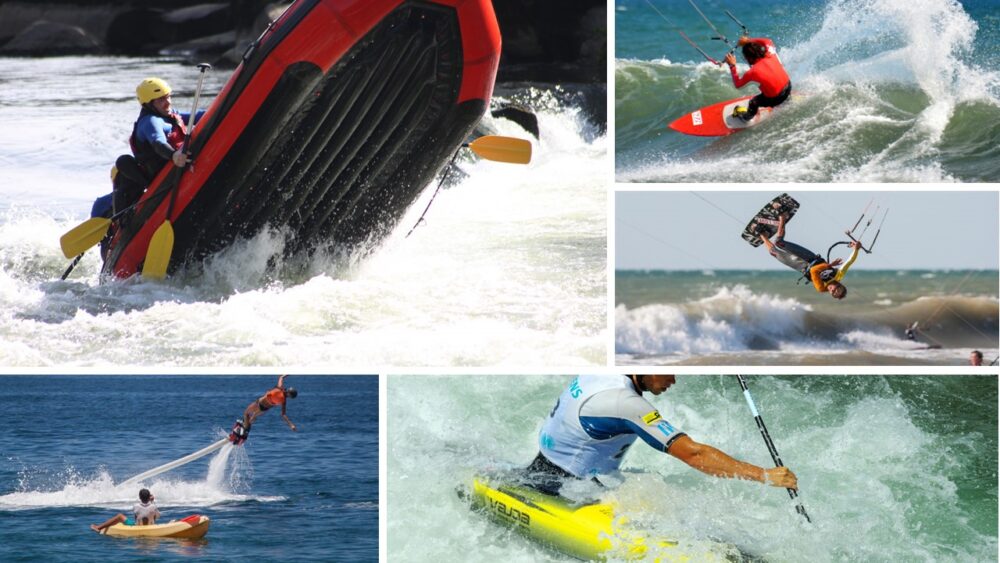Is Water Polo The Hardest Sport – Let’s Unravel The Secrets Together!
Is water polo the hardest sport? The resounding answer is yes. Imagine a sport that combines the brute strength of football, the endurance of swimming, the strategic finesse of chess, and the chaotic unpredictability of rugby. That’s water polo, an aquatic sport that pushes the human body to its limits and demands unwavering mental focus.
Water polo, a fast-paced, physically demanding sport played in a pool, demands a unique blend of strength, endurance, speed, and agility. Players constantly tread water, maneuver their bodies through the resistance of the water, and engage in intense physical contact with opponents.
This article delves into the intricacies of water polo, exploring the physical and mental demands that make it a sport like no other. We’ll uncover the reasons why water polo consistently ranks among the most challenging sports in the world, examining its unique blend of athleticism, strategy, and mental toughness.
Is Water Polo The Hardest Sport
Water polo is widely considered to be one of the most difficult sports in the world due to its demanding physical requirements, technical skills, and mental challenges. It is a physically demanding sport that requires exceptional swimming endurance, strength, and agility.
Players must constantly tread water, jump high to retrieve the ball and engage in physical contact with opponents. Additionally, water polo demands a high level of technical skill, as players must be able to accurately throw, pass, and shoot the ball while maneuvering in the water.
Also, water polo is a mentally demanding sport that requires players to make quick decisions under pressure, adapt to changing game situations, and maintain focus throughout the match.
Here are some reasons why water polo is considered to be one of the most difficult sports:
- Physically demanding: Water polo players must have exceptional swimming endurance, strength, and agility to compete at a high level. They must constantly tread water, engage in physical contact with opponents, and make quick changes in direction.
- Technically challenging: Water polo players must be able to accurately throw, pass, and shoot the ball while maneuvering in the water. They must also be able to control the ball with their hands and feet, and they must be able to dribble the ball while treading water.
- Mentally taxing: Water polo is a fast-paced and unpredictable sport that requires players to make quick decisions under pressure. They must also be able to adapt to changing game situations and maintain focus throughout the match.
Due to these demanding physical, technical, and mental challenges, water polo is often ranked among the most difficult sports in the world. It is a truly demanding sport that requires exceptional athleticism, skill, and mental toughness.
RELATED: How To Remove Water Spots – A Comprehensive Guide
What Is Water Polo (Is Water Polo The Hardest Sport)
Water polo is a team sport played in a swimming pool, where two teams of seven players each seek to score goals by throwing a ball into the opposing team’s goal. The game is fast-paced and physically demanding and requires players to be skilled swimmers, throwers, and catchers.
The goal of water polo is to score more goals than the opposing team by throwing a ball into their net. The ball is thrown with one hand, and players can swim, dribble, or pass the ball to teammates. Players cannot touch the bottom of the pool, and they must tread water throughout the game.
Water polo is played in four quarters, each lasting eight minutes. The clock stops after each goal, foul, or other stoppage in play. Players are not allowed to touch the bottom of the pool, and they must tread water throughout the game.
Water polo players wear a cap with ear guards and a mouthguard. They also use a water polo ball, which is slightly larger than a basketball and floats on the water.
Water polo is a full-contact sport, but there are rules in place to prevent players from injuring each other. Fouls are penalized, and players can be ejected from the game for serious fouls.
Water polo is a safe sport when played by the rules. However, there is always a risk of injury, so it is important to take precautions.
Players should warm up properly before each game, and they should cool down afterward. They should also wear a mouthguard and ear guards to protect their teeth and ears from injury.
Water polo is a great way to get exercise and improve your swimming skills. It is also a team sport that requires teamwork, communication, and strategy.
Water polo is a challenging and rewarding sport that can be enjoyed by people of all ages and skill levels. If you are looking for a fun and challenging sport to try, water polo is a great option.
READ ALSO: What Are Water Sports: Get The Truth And Expert Tips
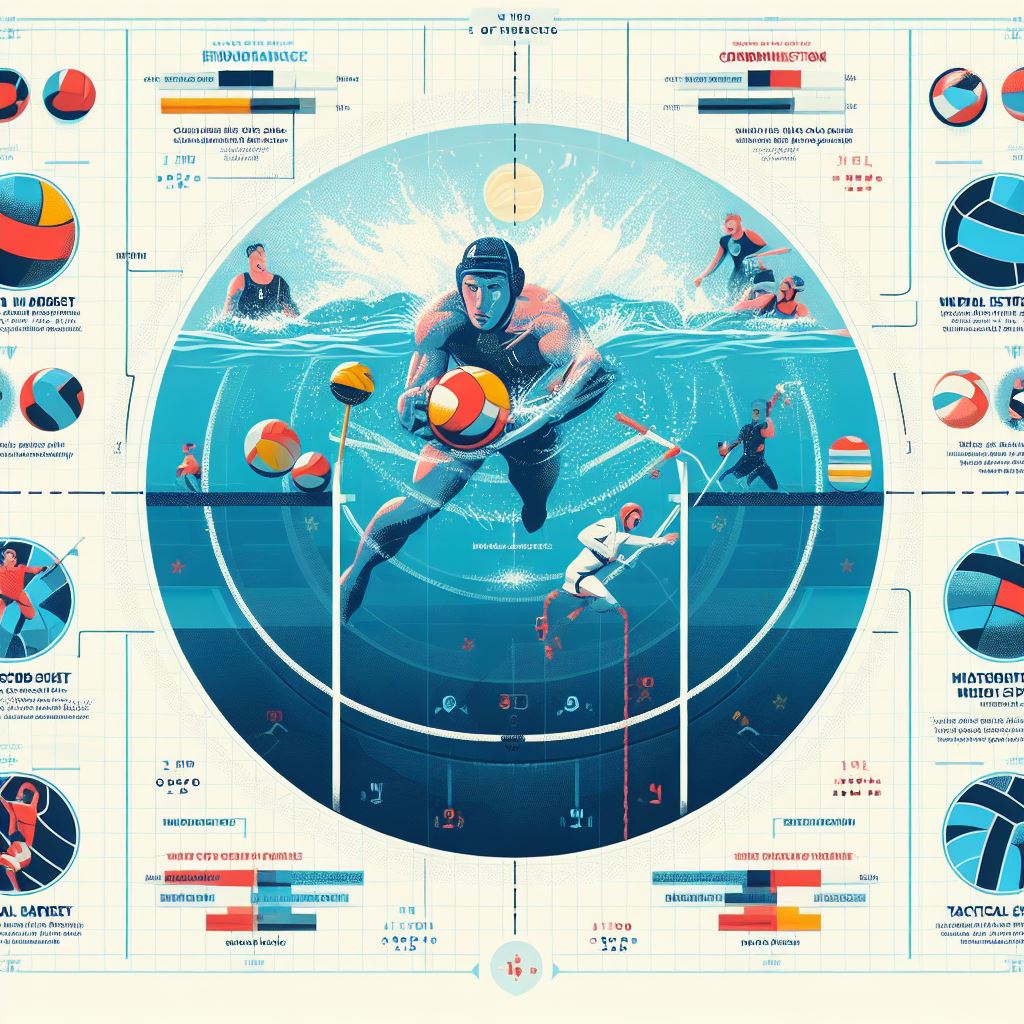
Understanding The Basics Of Water Polo (Is Water Polo The Hardest Sport)
Water polo may seem like a chaotic underwater brawl to the untrained eye, but beneath the surface lies a well-structured sport with intricate rules and tactics.
Water polo pits two teams of seven players against each other, with the objective being to score more goals than the opposing team. Players move around the pool treading water, passing the ball to teammates, and attempting to shoot it into the opponent’s goal.
Water polo, often hailed as the aquatic symphony of athleticism, combines elements of swimming, soccer, and basketball, creating a dynamic and challenging spectacle.
Played in a rectangular pool with goals at either end, two teams of seven players each strive to score by propelling a ball into the opposing team’s net. The catch? All of this takes place in water deep enough to impede easy movement, adding a layer of complexity that sets water polo apart.
Players are divided into attackers and defenders, with goalkeepers guarding their respective nets. The game unfolds in four quarters, each lasting roughly eight minutes, during which players navigate the water with a combination of swimming, treading, and strategic positioning.
The sport’s fluid nature means there’s little respite—constant movement, quick thinking, and precise ball control are paramount.
Unique Aspects and Perceived Difficulty
What elevates water polo to the echelons of sporting rigor is the amalgamation of physical and mental demands. The water’s resistance intensifies the exertion required for swimming, making endurance a non-negotiable attribute.
Factor in the strategic maneuvers, rapid transitions between offense and defense, and the necessity for split-second decision-making, and you have a recipe for a sport that demands the utmost from its participants.
Unlike land-based sports, where gravity is a constant ally, water polo players must contend with buoyancy and the absence of a solid foundation.
This necessitates an unparalleled level of core strength, agility, and balance. Additionally, the constant threat of fatigue looms, as players must battle both their opponents and the water itself, pushing their physical and mental limits to stay afloat—literally and figuratively.
In the arena of water polo, where every move is a delicate dance against resistance, mastering the basics is just the beginning.
The unique combination of elements—water, ball, and opponents—creates an environment where adaptability, finesse, and raw athleticism converge, making water polo a sport that challenges its players to redefine their limits beneath the surface.
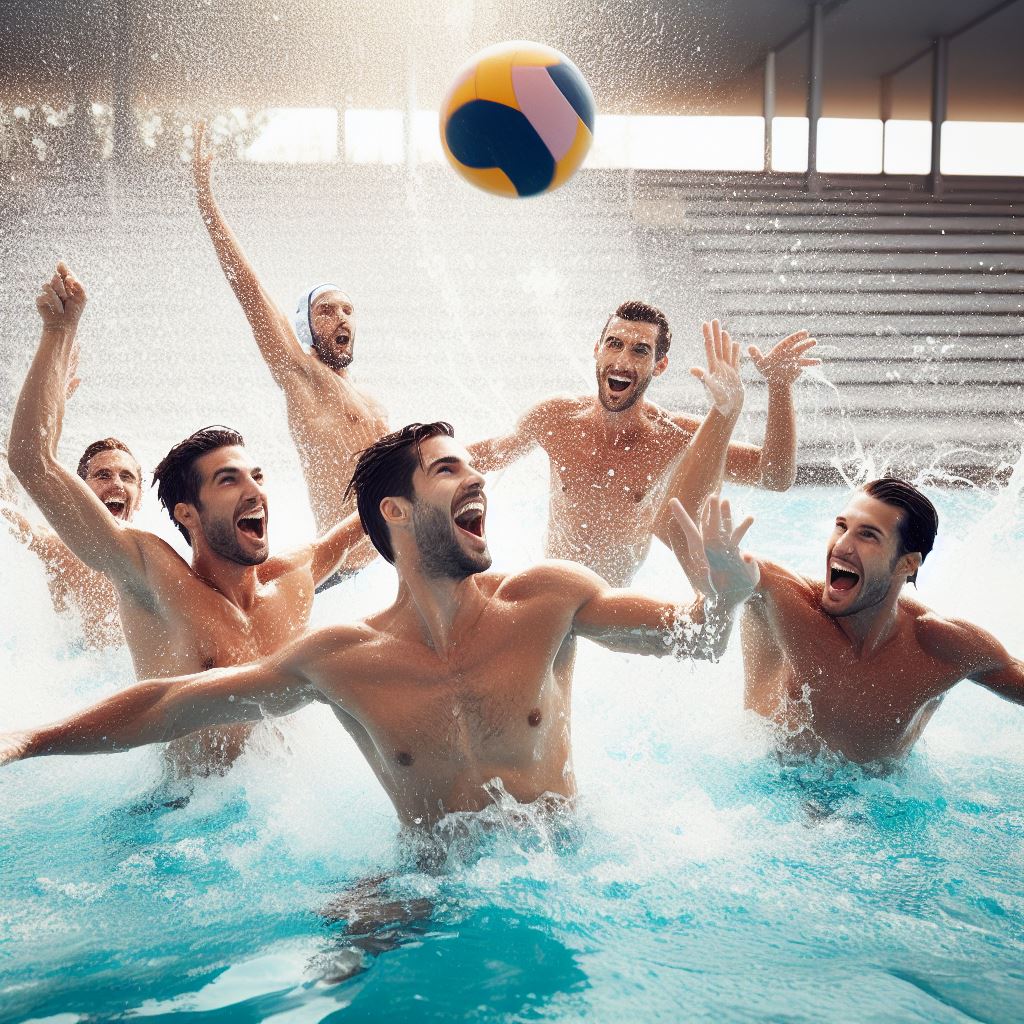
Comparing Water Polo’s Toughness With Other Tough Sports (Is Water Polo The Hardest Sport)
In the pantheon of tough sports, water polo stands shoulder to shoulder with renowned physical endeavors like rugby, wrestling, and gymnastics.
The unique fusion of aquatic athleticism, strategy, and mental resilience in water polo draws both parallels and distinctions when compared to these other demanding disciplines.
Water Polo Vs. Rugby
While rugby and water polo play out on different terrains, the shared essence lies in relentless physicality. Renowned rugby player, Jonah Lomu, once remarked, “The physical demands of rugby are immense, but water polo takes it to another level.
The constant swimming, grappling, and strategic thinking in water make it an unparalleled test of endurance and strength.”
Water Polo Vs. Wrestling
Wrestling and water polo both demand formidable upper body strength and agility, but the element of water adds a distinct challenge.
Olympic gold medalist in wrestling, Dan Gable, noted, “Wrestling taught me resilience, but water polo taught me to be resilient in a constantly changing environment. The ability to adapt on the fly is what sets water polo apart.”
Water Polo Vs. Gymnastics
Gymnastics showcases breathtaking feats of strength and precision, but water polo introduces a dynamic, three-dimensional playing field.
Olympic gymnast Simone Biles reflected on her experience with water polo, stating, “In gymnastics, every move is planned on solid ground. Water polo added a layer of unpredictability; it’s like executing a routine while dancing on water. The mental game is unparalleled.”
Anecdotes from Multi-Sport Athletes
Athletes who have ventured into both the terra firma and aquatic realms offer insights into the unique challenges of water polo. Michael Phelps, the most decorated Olympian in history, shared, “Swimming was my foundation, but water polo was a revelation.
The physical demands of swimming met the strategic intensity of a team sport—I had to adapt my mindset entirely.”
Former rugby player turned water polo enthusiast, Sonny Bill Williams, expressed, “Rugby is brutal, no doubt. But water polo took me to the edge. Treading water while fighting for the ball, it’s a different kind of battle. The mental resilience required is next level.”
These anecdotes illuminate the multifaceted nature of water polo’s toughness, emphasizing the fusion of physical endurance, strategic thinking, and adaptability.
In the arena of sports renowned for their toughness, water polo emerges not just as a counterpart but as a dynamic and singular challenge, beckoning athletes to conquer the uncharted depths of aquatic intensity.
Training Regimens of Water Polo Players (Is Water Polo The Hardest Sport)
The training regimens of water polo players are a meticulous blend of endurance, strength, agility, and aquatic finesse. The unique demands of the sport necessitate a multifaceted approach, making water polo training an intense and diverse journey.
1. Endurance Training
Given the constant movement in the pool, water polo players undergo rigorous endurance training. This includes sustained swimming drills, often covering significant distances, to build cardiovascular stamina.
Interval training mimicking the game’s stop-and-start nature is also common, preparing players for the dynamic shifts during matches.
2. Strength and Conditioning
Upper body and core strength are paramount in water polo. Players engage in strength training exercises such as weightlifting, resistance training, and bodyweight exercises to develop the power needed for throws, grappling, and sustained treading water.
Core stability exercises contribute to balance and agility in the aquatic environment.
3. Skill-Specific Workouts
Water polo’s technical demands require skill-specific training. Shooting drills, passing exercises, and defensive maneuvers are honed through repetitive practice. Goalkeepers undergo specialized training to enhance reaction time, diving ability, and ball-blocking skills.
4. Swimming Drills
To enhance swimming efficiency, water polo players engage in various swimming drills. These drills focus on stroke technique, speed, and underwater propulsion, allowing players to navigate the pool with optimal efficiency during the game.
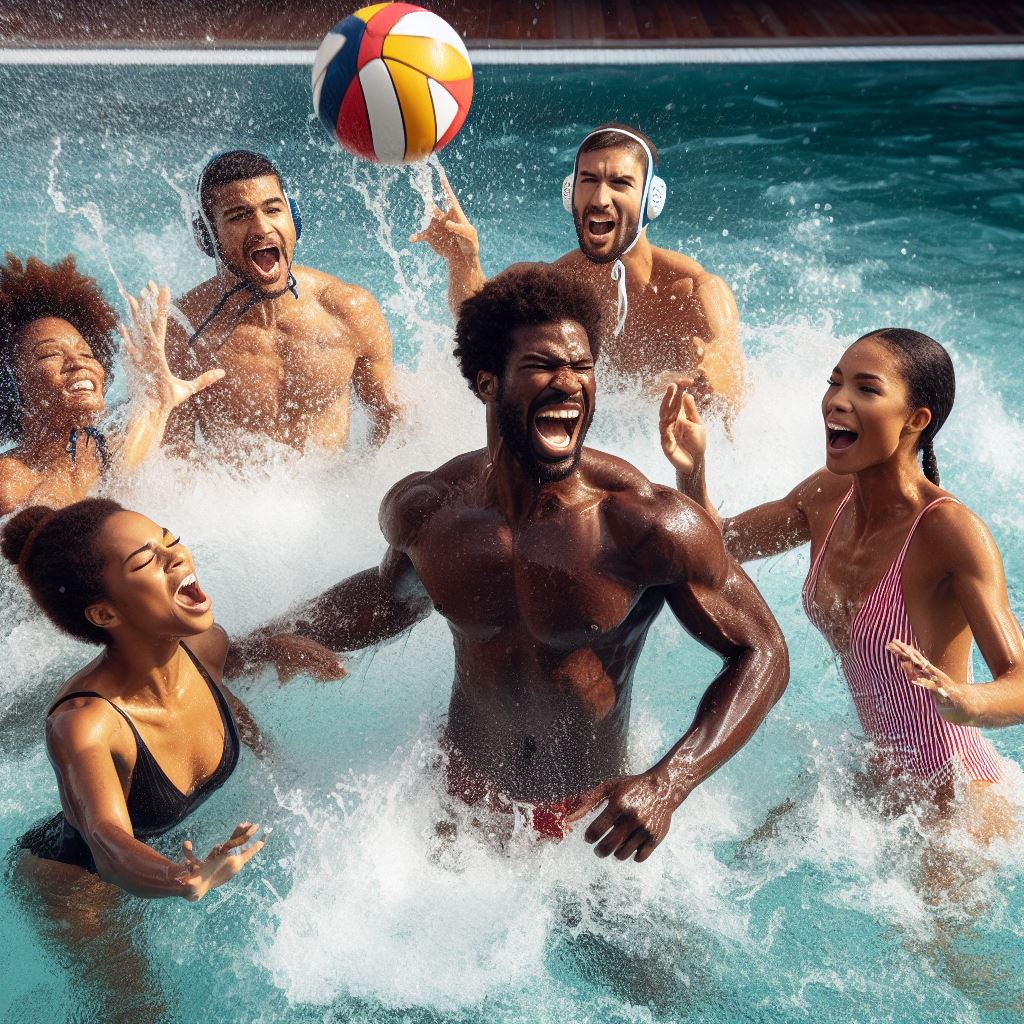
Water Polo Training Regime Comparisons with Other Sports (Is Water Polo The Hardest Sport)
When compared to other sports, the training regimen of water polo players showcases a distinctive combination of aquatic and athletic conditioning.
1. Versus Soccer
While soccer players engage in extensive running drills, water polo’s emphasis on swimming adds a unique cardiovascular dimension. Water polo players, in addition to running drills, incorporate swimming intervals to simulate the sport’s demands.
2. Versus Weightlifting
Weightlifting is crucial for both water polo and sports like wrestling. However, the aquatic environment in water polo necessitates adaptations. Resistance training in water, such as using drag suits or resistance bands, adds an extra layer to strength development.
3. Versus Basketball
Like basketball, water polo requires agility and quick changes in direction. However, the buoyancy of water adds complexity. Water polo players may integrate poolside agility drills to enhance their ability to move swiftly in the water.
4. Versus Track and Field
Track and field athletes focus on specific events, each with its own training requirements. Water polo players, on the other hand, engage in a holistic approach, combining swimming, strength training, and skill development to meet the multifaceted demands of their sport.
In essence, water polo’s training regimens embody the sport’s dynamic nature, requiring athletes to master a diverse skill set while navigating the challenges of an aquatic environment.
The intensity and variety of these workouts reflect the unique demands that set water polo apart in the realm of athletic preparation.
The Unique Skills Required For Water Polo (Is Water Polo The Hardest Sport)
Water polo demands a unique blend of physical prowess, technical mastery, and strategic thinking. Players must possess exceptional swimming skills, strength, and endurance to navigate the pool and execute plays effectively.
They must also develop the technical skills of ball handling, passing, shooting, and defending to excel in this dynamic and competitive sport.
1. Ball Handling
Ball handling in water polo is an art that blends finesse with strength. Players must possess an acute sense of touch to control the ball in the water’s resistance. Hand-eye coordination is crucial as they maneuver the ball, keeping it close to evade defenders or setting up for a shot.
The ability to handle the ball effectively while treading water adds a layer of complexity, requiring players to master a delicate balance of control and agility.
2. Passing
Precise passing is the lifeblood of water polo teamwork. Players must be adept at both short, quick passes in tight situations and long-range throws to advance the ball strategically. Passing techniques include wrist flicks, overhand throws, and sidearm passes.
The challenge lies not only in executing accurate passes but also in doing so while adjusting to the fluid dynamics of the water and the movements of opponents.
3. Shooting
Shooting in water polo demands a combination of power, accuracy, and tactical finesse. Players must be proficient in various shooting techniques, adapting their approach based on the distance from the goal and the defensive pressure.
Whether executing a quick snap shot, a powerful skip shot, or an arcing lob, shooters must factor in the water’s resistance and the goalkeeper’s positioning, making each shot a calculated and dynamic maneuver.
4. Defending
Defensive prowess is a cornerstone of success in water polo. Players must employ a mix of body positioning, anticipation, and quick reactions to thwart opponents’ attempts to pass or shoot. Physicality is inherent in water polo defense, with players jostling for position while treading water.
The art of stealing the ball, known as “steals,” requires precise timing and an understanding of the opponent’s movements.
Integration of Unique Skills
What sets water polo apart is the seamless integration of these skills in a constantly changing and dynamic environment. A player might transition from defensive maneuvers to a precise pass or a powerful shot in a matter of seconds.
The ability to switch between these roles fluidly, adapting to the ebb and flow of the game, is a testament to the holistic mastery required in water polo.
The unique skills demanded by water polo not only reflect the technical complexity of the sport but also highlight the adaptability and versatility of its athletes.
From the delicate touch of ball handling to the explosive power of shooting and the strategic precision of passing and defending, water polo’s unique skills weave a narrative of athleticism, strategy, and aquatic finesse beneath the surface of the game.
The Different Levels Of Water Polo Competition (Is Water Polo The Hardest Sport)
Water polo is a dynamic and fast-paced sport that is enjoyed by people of all ages and skill levels. From recreational leagues to professional competitions, there is a level of water polo for everyone.
1. Recreational Water Polo
At the grassroots level, recreational water polo provides an entry point for individuals of all ages and skill levels. It often serves as a casual and community-oriented introduction to the sport.
Recreational leagues and pick-up games promote inclusivity, fostering a love for water polo while emphasizing fun and social interaction. Players at this level may include beginners, enthusiasts, and those seeking a more laid-back experience.
2. Club Water Polo
Club water polo represents a more competitive tier, where players participate in organized teams that often compete locally, regionally, or nationally. Club teams typically involve a higher level of commitment and training compared to recreational play.
These organizations often serve as talent pipelines, nurturing emerging players and providing a platform for skill development beyond the recreational level.
3. High School Water Polo
High school water polo is a pivotal stage for many aspiring athletes. As an interscholastic sport, high school water polo competitions are organized between schools and often follow the academic calendar.
Players at this level hone their skills, compete at the regional or state level, and contribute to the school’s athletic culture. High school water polo serves as a stepping stone for those aspiring to play at the collegiate or professional levels.
4. College Water Polo
Collegiate water polo is a highly competitive arena, with teams representing universities and colleges. The level of play is elevated, and athletes often balance rigorous training schedules with academic commitments.
College water polo competitions include regular-season matches, conference championships, and NCAA tournaments. The collegiate level serves as a crucial developmental phase, providing players with exposure to advanced tactics and heightened competition.
5. Professional Water Polo
At the pinnacle of the sport, professional water polo attracts elite athletes from around the world. Professional leagues exist in various countries, each featuring top-tier teams vying for national and international championships.
Players at this level commit to water polo as a full-time career, often competing in prestigious tournaments such as the FINA Water Polo World League or the LEN Champions League.
Professional water polo showcases the highest level of skill, strategy, and athleticism, with players reaching the zenith of their careers.
Transition and Overlapping Levels
It’s essential to note that players may transition between these levels, and there can be overlap in participation. For instance, a high school athlete may also play for a club team during the off-season, and a college player may engage in recreational play during the summer.
This interconnected network of competition levels contributes to the overall growth and sustainability of water polo as a sport, offering opportunities for players at various stages of their athletic journey.
The Safety Precautions Taken In Water Polo (Is Water Polo The Hardest Sport)
Rules and Officiating
Safety is paramount in water polo, and the sport has specific rules and officiating protocols to ensure a secure playing environment.
1. Physical Contact Rules
- While physicality is inherent in water polo, certain types of contact are regulated. Excessive force, intentional aggression, or actions endangering an opponent’s safety are penalized.
- Players are not allowed to pull, hold, or sink an opponent underwater.
2. Exclusion Fouls
Major fouls, known as exclusion fouls, result in a player being temporarily removed from the game. This penalty serves as a deterrent for overly aggressive or unsafe play.
3. Goalkeeper Protection
Rules are in place to protect goalkeepers, who wear distinctive caps. Goalkeepers cannot be pulled underwater by an opponent, and striking or impeding them is strictly prohibited.
4. Officiating
Referees play a crucial role in enforcing rules and maintaining a safe playing environment. They have the authority to issue penalties, exclude players, or stop the game if safety concerns arise.
Equipment
1. Caps
Players wear colorful caps to distinguish teams, and goalkeepers wear caps of a different color. These caps serve not only as a visual identifier but also provide some protection for the head.
2. Mouthguards
While not universally mandatory, many water polo players wear mouthguards to protect their teeth during physical play and accidental collisions.
3. Swimsuits
Players wear tight-fitting swimsuits, reducing the risk of grabbing or entanglement during play. Female players typically wear one-piece suits.
4. Ear Guards
Some players opt for ear guards to protect against accidental hits to the ears, which can occur during physical play.
Preventive Measures
1. Pre-game Safety Briefings:
Officials often conduct pre-game briefings to remind players of safety rules and emphasize fair play.
2. Referee Whistle
The referee’s whistle serves as a means to stop play promptly, allowing officials to address potential safety concerns.
3. Emergency Action Plans
Venues hosting water polo events have emergency action plans in place, detailing procedures for responding to injuries or emergencies.
4. Training and Certification
Coaches, officials, and players undergo training to familiarize themselves with safety protocols. Referees, in particular, receive certification to ensure a thorough understanding of the rules and enforcement practices.
2. Medical Personnel Presence
During competitions, medical personnel are often present to provide immediate assistance in case of injuries.
By combining strict rules, vigilant officiating, and appropriate equipment, water polo aims to create an environment that prioritizes safety while allowing for the inherent physicality of the sport. These measures contribute to an atmosphere where players can compete with intensity while minimizing the risk of injuries.
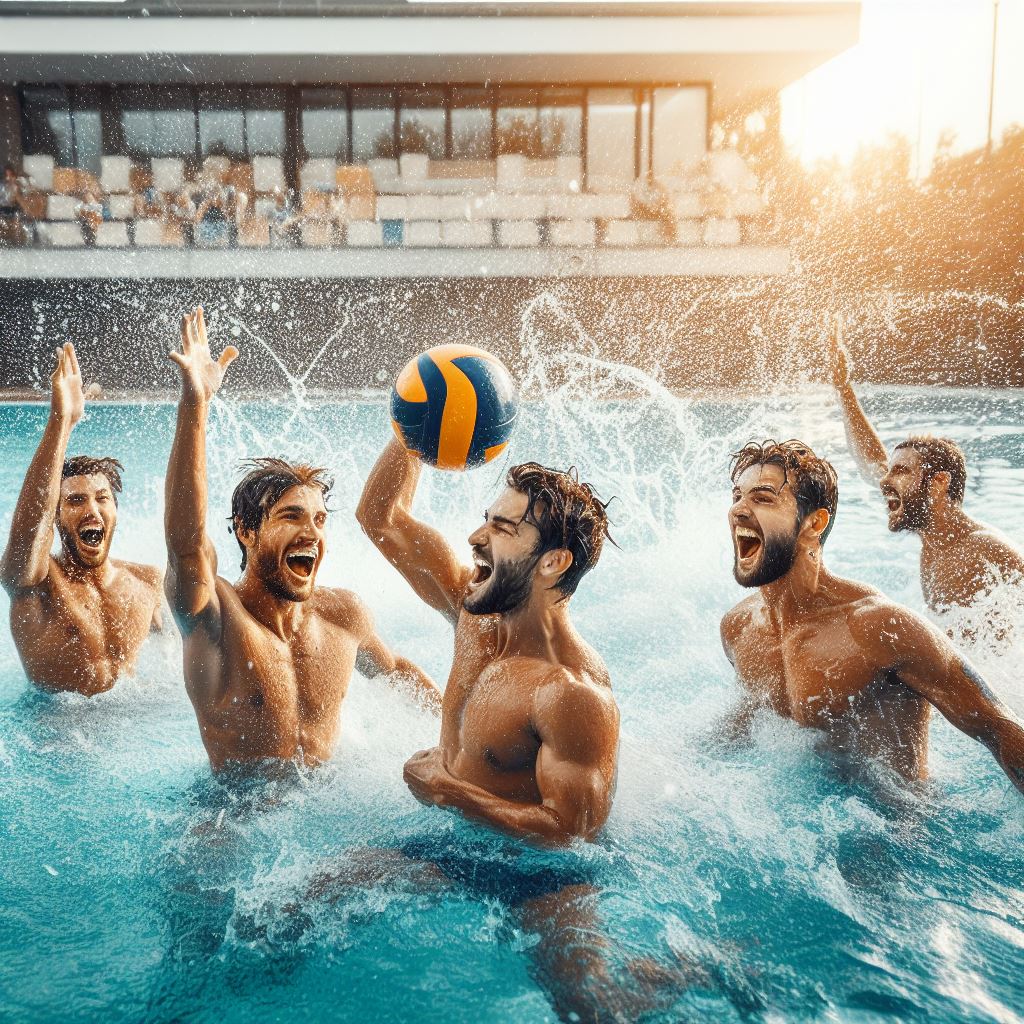
Is Water Polo The Hardest Sport In The World (Is Water Polo The Hardest Sport)
Water polo is no doubt one of the hardest sports. However, declaring any sport as the “hardest” in the world is not fair, as it depends on individual perspectives and criteria for measuring difficulty.
Water polo is undoubtedly a physically and mentally demanding sport, requiring a unique blend of skills such as swimming endurance, strength, agility, and strategic thinking.
The combination of these factors, along with the added challenge of playing in water, contributes to the perception that water polo is among the most challenging sports.
However, it’s essential to recognize that other sports also make strong claims for being the “hardest.” For example, sports like rugby, wrestling, gymnastics, and decathlon pose their own set of formidable challenges and require a high level of athleticism and skill.
Ultimately, the perceived difficulty of a sport is subjective, and opinions may vary based on personal experiences, preferences, and the specific criteria used for assessment. Each sport has its unique demands, and what one person finds challenging, another may find enjoyable or less difficult.
Is Water Polo Dangerous
Water polo, like many sports, involves a level of physical contact and can pose some inherent risks. While the sport has established rules and safety measures to minimize the potential for injuries, there are factors to consider:
- Physical Contact: Water polo is a contact sport, and physical contact between players is an integral part of the game. This can lead to injuries such as bruises, cuts, and occasionally more severe injuries.
- Drowning Risk: While drowning is rare in organized water polo games, the risk of exhaustion or accidental submersion exists, particularly given the constant swimming and physical exertion involved. This is why strong swimming skills are a prerequisite for participation.
- Facial and Head Injuries: Accidental collisions or contact with the ball can lead to facial injuries, including broken noses or dental injuries. Protective equipment, such as caps, provides some level of protection but may not prevent all injuries.
- Musculoskeletal Injuries: The physical demands of treading water, rapid changes in direction, and explosive movements can contribute to musculoskeletal injuries, such as strains, sprains, or overuse injuries.
- Eye Injuries: Eye injuries can occur due to accidental contact with hands or the ball. The use of goggles is common to help protect players’ eyes.
To mitigate these risks, water polo organizations and competitions implement safety measures, including rules for fair play, proper officiating, and adherence to equipment regulations.
Additionally, players are encouraged to undergo thorough training, conditioning, and skill development to reduce the likelihood of injuries.
It’s crucial for participants to be aware of and follow safety guidelines, including proper warm-ups, adherence to rules, and the use of appropriate safety equipment. Coaches, officials, and event organizers also play a key role in promoting a safe playing environment.
While water polo has inherent risks, many participants find the physical and strategic aspects of the sport rewarding and enjoyable. As with any sport, understanding and mitigating risks contribute to a safer and more enjoyable experience for participants.
Is Water Polo Harder Than Football
Yes, water polo is harder than football. But both water polo and football are physically demanding sports that require players to be in excellent shape. However, they also require different types of skills and athleticism.
Water polo is a fast-paced sport that requires players to be able to swim, tread water, pass, shoot, and defend. They also need to be able to maintain their composure and make quick decisions under pressure.
Football is a more strategic sport that requires players to be able to run, catch, throw, and block. They also need to be able to follow the rules and work together as a team.
In terms of physicality, water polo is probably harder than football. Players in water polo are constantly in motion and have to deal with the resistance of the water. They also have to be able to withstand the physical contact that is part of the game.
However, football is also demanding in its own way. Players have to be able to maintain their speed and endurance for an entire game, and they have to be able to take hard hits without getting injured.
Ultimately, whether water polo or football is harder is a matter of opinion. Both sports require a lot of skill, athleticism, and dedication.
Here is a table summarizing some of the key differences between water polo and football:
| Feature | Water Polo | Football |
| Setting | Swimming pool | Field |
| Pace | Fast-paced | Slower-paced |
| Skills required | Swimming, treading water, passing, shooting, defending | Running, catching, throwing, blocking |
| Athleticism required | Muscular, agile | Strong, explosive |
| Strategy required | Some | More |
| Contact | Full-contact | Limited contact |
What Is The Hardest Sport
Determining the “hardest” sport is subjective, as it depends on various factors such as personal preferences, individual strengths, and the criteria used to assess difficulty.
Different sports present distinct challenges, and what one person finds difficult, another may find enjoyable or less challenging. However, some sports are often cited as particularly demanding due to their physical and mental requirements:
- Decathlon: The decathlon is an athletic competition consisting of ten track and field events, testing a wide range of physical abilities, including speed, strength, agility, and endurance.
- Boxing: Boxing demands a high level of cardiovascular fitness, strength, speed, and strategic thinking. Athletes must also endure physical impact and possess strong mental resilience.
- MMA (Mixed Martial Arts): MMA combines various martial arts disciplines, requiring proficiency in striking and grappling. Athletes need a versatile skill set and must be prepared for a diverse range of opponents and fighting styles.
- Rowing: Rowing is a physically demanding sport that requires a combination of strength, endurance, and precise technique. Rowers often engage in intense cardiovascular and strength training.
- Gymnastics: Gymnastics demands exceptional strength, flexibility, balance, and coordination. Athletes must perform intricate routines on various apparatus, showcasing a high degree of skill and precision.
- Ice Hockey: Ice hockey combines high-speed skating, physical contact, and puck control. Players need strength, agility, and the ability to make split-second decisions on the ice.
- Water Polo: Water polo is a physically demanding sport played in water, requiring swimming endurance, strength, agility, and strategic thinking. Players must navigate the water while engaging in constant movement and physical contact.
It’s important to note that the perceived difficulty of a sport is subjective, and individuals may have different opinions based on experiences and preferences. Additionally, the difficulty of a sport can vary depending on the level of competition and individual skill levels within that sport.
Is Water Polo Harder Than Swimming
Water polo and swimming are both physical activities that require a high level of fitness, but they also require different skills and athleticism.
Swimming is a sport that focuses on endurance and technique. Competitors swim laps in a pool, and they must be able to hold their breath, propel themselves through the water, and maintain proper form. Swimming requires a strong core, good breathing control, and efficient arm and leg movements.
Water polo is a more demanding sport that combines swimming with ball-handling, teamwork, and strategy. Competitors play in a pool and must be able to swim, pass, shoot, and defend while dealing with the resistance of the water.
Water polo also requires a high level of agility, hand-eye coordination, and decision-making skills.
In terms of physicality, water polo is probably harder than swimming. Competitors in water polo must be able to swim at a high level, but they also have to contend with the physical contact that is part of the game.
Water polo players must be able to withstand hits and fouls without getting injured, and they must be able to maintain their composure under pressure.
In terms of athleticism, water polo also requires a wider range of skills than swimming. Competitors in water polo must be able to swim, pass, shoot, and defend, as well as understand and execute complex strategies. This level of athleticism is not required in swimming, which is primarily a sport of endurance and technique.
Here is a table summarizing some of the key differences between water polo and swimming:
| Feature | Water Polo | Swimming |
| Setting | Swimming pool | Pool or open water |
| Pace | Fast-paced | Varies depending on distance |
| Skills required | Swimming, passing, shooting, defending | Endurance, technique |
| Athleticism required | Muscular, agile, strategic | Strong, explosive |
| Strategy required | More | Less |
What Is The Hardest Sport Physically
Determining the physically hardest sport is challenging and often subjective, as it depends on individual perspectives and the specific criteria used to measure difficulty. However, several sports are renowned for their intense physical demands:
- Boxing: Boxing requires a combination of cardiovascular endurance, strength, speed, agility, and mental toughness. Athletes engage in high-intensity bouts with a focus on both offensive and defensive maneuvers.
- Rugby: Rugby is a physically demanding sport that involves continuous running, tackling, scrummaging, and strategic play. Players need strength, endurance, and resilience to withstand the physicality of the game.
- MMA (Mixed Martial Arts): MMA combines various martial arts disciplines, including striking and grappling. Athletes need to be well-rounded in different fighting styles and possess high levels of cardiovascular fitness.
- Decathlon: The decathlon is an athletics competition comprising ten events, including sprints, jumps, throws, and endurance races. Athletes must excel in a wide range of disciplines, showcasing versatility and overall athleticism.
- Water Polo: Water polo demands swimming endurance, strength, agility, and strategic thinking. Players engage in constant movement in the water, involving physical contact, passing, shooting, and defensive maneuvers.
- CrossFit: While not a traditional sport, CrossFit involves a variety of high-intensity functional movements, including weightlifting, gymnastics, and cardiovascular exercises. Athletes in CrossFit competitions face diverse physical challenges.
- Ice Hockey: Ice hockey combines high-speed skating, physical contact, and puck control. Players must navigate the ice, engage in intense physical battles, and execute precise plays.
- Ultra-Endurance Running (e.g., Ultramarathons): Events like ultramarathons involve running distances well beyond the standard marathon length. Athletes must endure extreme physical and mental challenges over extended periods.
Is Water Polo Harder Than Soccer (Is Water Polo The Hardest Sport)
Determining whether water polo is harder than soccer (football) is subjective, as it depends on individual perspectives and the criteria used to measure difficulty.
Both sports present unique challenges and require specific skills. However, water polo seems to be harder. Here are some points of comparison:
Water Polo
- Aquatic Environment: Playing in water adds an extra layer of complexity to water polo. Athletes must swim, tread water, and perform various skills while contending with the resistance of the water.
- Dynamic Play: Water polo is a fast-paced, dynamic sport with continuous movement, quick changes in direction, and physical contact. Players need swimming endurance, strength, and agility.
- Multifaceted Skills: In addition to swimming, water polo requires skills such as ball handling, passing, shooting, and defending. The game demands a blend of athleticism and tactical awareness.
Soccer
- Field Play: Soccer is played on a larger field, requiring players to cover significant distances. It involves running, sprinting, and changes in direction throughout the match.
- Endurance: Soccer matches typically last longer than water polo games, testing players’ endurance. Athletes need to maintain a high level of activity for extended periods.
- Technical Skills: Soccer emphasizes technical skills such as dribbling, passing, and shooting. Players must possess precise ball control, and the game involves strategic positioning and teamwork.
Difficulty Assessment
- Physical Demand: Both sports demand high levels of physical fitness, but the nature of physical exertion differs. Water polo involves swimming and dynamic movements in water, while soccer emphasizes running and field play.
- Skill Variety: Water polo requires a broader range of skills due to the aquatic environment and the incorporation of ball-handling elements. Soccer, while also multifaceted, places a strong emphasis on running, technical ball skills, and strategic play.
Top 10 Hardest Olympic Sports
Ranking the “hardest” Olympic sports is subjective and can depend on individual perspectives and criteria for measuring difficulty. However, some sports are widely recognized for their physical and mental demands. Here is a list, in no particular order, of Olympic sports that are often considered among the most challenging:
- Decathlon: The decathlon involves ten track and field events, testing a wide range of physical abilities, including sprinting, jumping, throwing, and endurance.
- Gymnastics (Artistic): Artistic gymnastics demands strength, flexibility, balance, and precise technique. Athletes perform intricate routines on apparatus like the vault, uneven bars, balance beam, and floor exercise.
- Water Polo: Water polo requires swimming endurance, strength, agility, and strategic thinking. Players engage in constant movement, ball handling, and physical contact in a water environment.
- Rowing: Rowing involves intense cardiovascular fitness, strength, and coordination. Athletes row in a team or individually, often covering significant distances.
- Boxing: Boxing demands a high level of cardiovascular endurance, strength, speed, and mental toughness. Athletes engage in bouts with a focus on both offensive and defensive maneuvers.
- Cross-Country Skiing (Biathlon): Combining cross-country skiing with rifle shooting, biathlon tests both endurance and precision under challenging conditions.
- Modern Pentathlon: The modern pentathlon comprises five events: fencing, swimming, equestrian show jumping, and a combined event of running and shooting. Athletes must excel in diverse disciplines.
- Cycling (Track Pursuit): Track cycling pursuit events require a combination of explosive power, endurance, and strategic pacing.
- Ice Hockey: Ice hockey combines high-speed skating, physical contact, and puck control. Players must navigate the ice, engage in intense physical battles, and execute precise plays.
- MMA (Mixed Martial Arts): While not traditionally part of the Olympics, MMA incorporates various martial arts disciplines, requiring a well-rounded skill set and high levels of cardiovascular fitness.
It’s important to note that the perceived difficulty of a sport can vary based on individual strengths, preferences, and training backgrounds. Additionally, the level of competition, specific event rules, and the athlete’s commitment to training all contribute to the overall difficulty of a sport.
The Bottom Line On Is Water Polo The Hardest Sport
In the realm of sports, the question lingers: Is water polo the hardest sport? The dynamic fusion of relentless swimming, strategic prowess, and physical intensity make water polo an unparalleled athletic challenge.
As we’ve delved into the unique demands, skills, and mental fortitude required, it becomes evident that water polo stands as a testament to the epitome of sports difficulty.
So, is water polo the hardest sport? The resounding echo of its challenging nature suggests that, indeed, mastering the waves in the pursuit of victory makes water polo an unparalleled test of athletic mettle.

